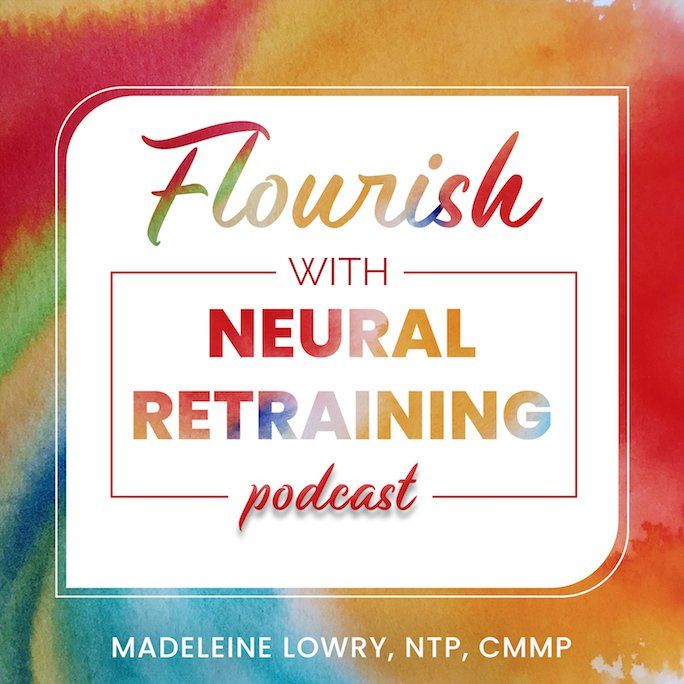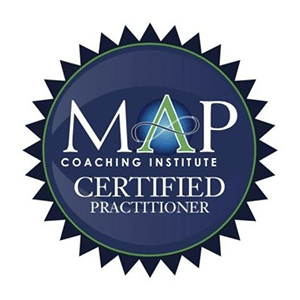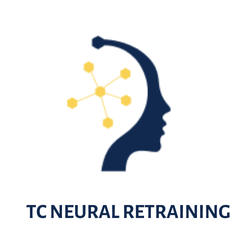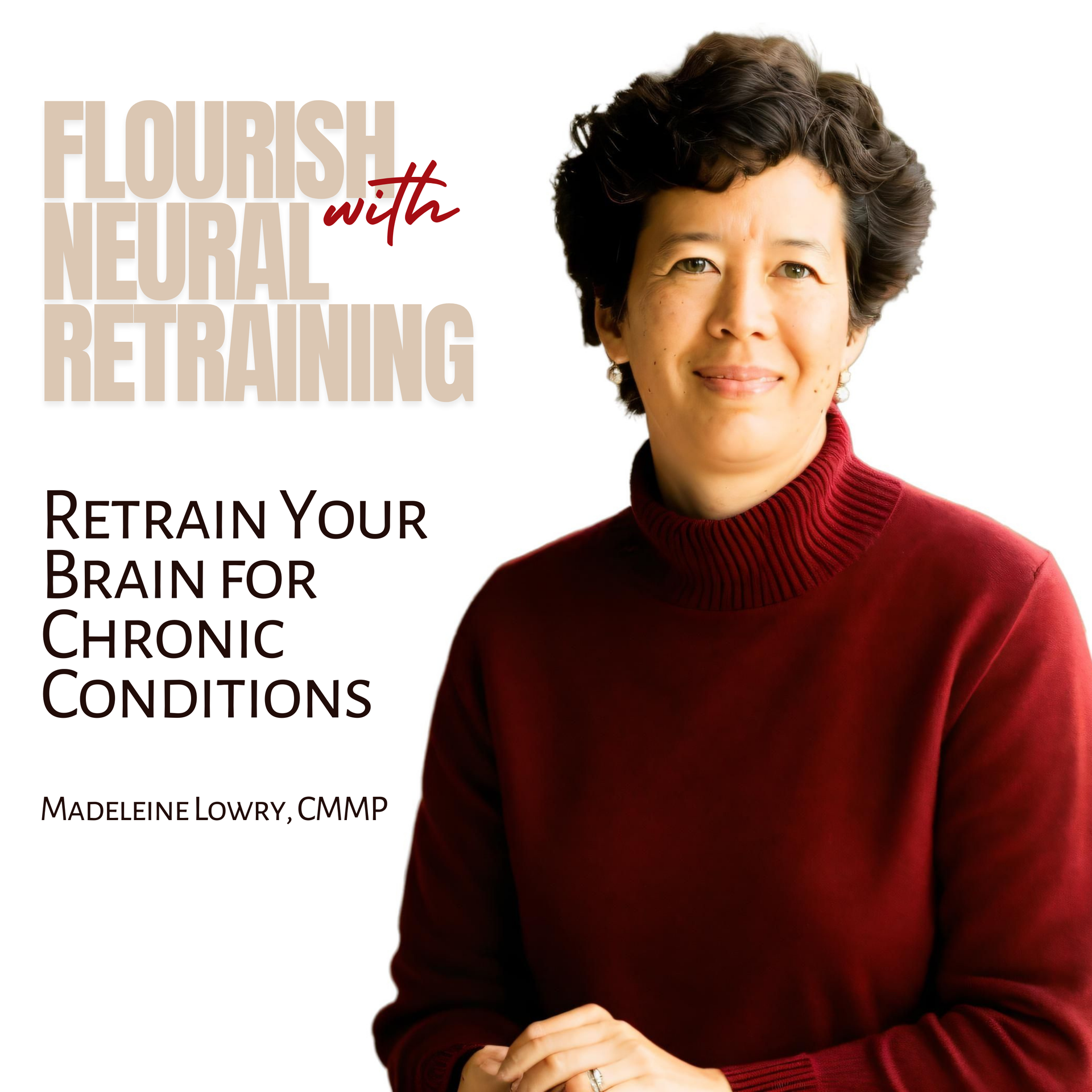Getting Ready for Your First MAP Session
Flourish with Neural Retraining Podcast, Episode 72 - A Listener's Guide

Listen to the podcast episode
In This Episode
- What to expect from your first experience with MAP.
- How to prepare for your Introductory MAP session.
- How you can tell if MAP is working for you within 3 sessions.
Show Notes
Join me for episode 72 where I will talk about how to prepare yourself for your first MAP session. I will go over the most important step, which is to watch the 15-minute preparatory video, and the flow of the first session as well as some common concerns about the MAP process.
If you are not familiar with the MAP Method, let me just say this: The MAP Method is a “beautifully simple” way to resolve or release trauma emotions. If you are familiar with energy psychology methods like EMDR or tapping, MAP is the next generation - gentler and goes deeper. If you are familiar with energy work like Reiki, you might think of MAP as Reiki for the mind. If you are familiar with acupuncture, this is similar, only we use the mind to diagnose blocks, and optimize energy flow. If you have tried neural retraining methods like DNRS, MAP sessions achieve the same ends with less time and effort.
In this episode, I discuss:
- How to schedule your Introductory MAP session.
- Why it is important to watch the 15-minute preparatory video.
- How to access the Zoom and set up your video.
- How to choose a subject for your first session.
- Why we take a baseline of your topic before we get started.
- The purpose of the first MAP session, a 60-minute session.
- Why we take a few minutes to complete the initiation to MAP at the beginning of your first session.
- The flow of the Introductory session - what to expect.
- The purpose of syncing up our subconscious minds prior to working on your subject.
- The two streams of information a practitioner is following in a MAP session.
- How a MAP Practitioner is able to guide the session through muscle-checking.
- Why we say that MAP is not hypnosis, but rather a meditative process.
- What to expect as we begin to work on your subject.
- How to observe the clues that your subconscious mind is giving you during a session.
- How each MAP session is an iterative process.
- What you will notice by the end of the session that will be an indication that the method is working for you.
- The value of neutralizing memories and its effect on subconscious programming, patterns of behavior, conditioned responses, symptoms, etc.
- Factors that will improve your receptivity to MAP.
If you enjoyed this episode, you may be interested in the previous episode: How to Use Your Mind to Heal Your Body, or my interview with Colette Streicher, LMSW, the founder of the MAP Method in episode 30.
To learn more about the MAP Method, please visit
MAPforHealth.us for our free courses. To schedule an Introductory MAP session please book online at
TCNeuralRetraining.com.
Transcript
*Please note: Transcript generated by AI, accuracy not guaranteed.*
[music]
Welcome to the Flourish with Neural Retraining Podcast. I'm your host, Madeline Lowry, founder of Twin Cities Neural Retraining, and a certified MAP method practitioner specializing in anxiety,
sensitivities, and chronic symptoms and conditions.
Join me for episode 72, where I will talk about how to prepare yourself for your first MAP session.
I will go over the most important step, which is to watch the 15-minute preparatory video,
and the flow of the first session, as well as some common concerns about the MAP process.
If you are not familiar with the MAP method, let me just say this: The MAP method is a beautifully simple way to resolve or release trauma emotions.
If you are familiar with energy psychology methods like EMDR or tapping, MAP is the next generation of these methods, and I believe it is gentler and goes deeper. If you are familiar with energy work like Reiki, you might think of MAP as Reiki for the mind. If you are familiar with acupuncture, this is similar only we use the mind to diagnose blocks and optimize energy flow.
If you have tried neural retraining methods like DNRS, you will find that MAP sessions achieve the same ends with less time and effort.
For many of my clients working with the mind is the missing puzzle piece in their healing journey.
That is because the subconscious mind is very powerful. It is responsible for 90 to 95% of all brain activity, and it runs all the systems of the body.
MAP sessions are complementary to any other modality or treatment method that you are using, and that is because you can achieve more when you are working with your mind than when you are working against it.
As always, we must explain that the information we share in the podcast is for educational purposes only. As MAP method practitioners, we do not diagnose or treat disease. Instead, we work with the mind to optimize health.
Are you ready to find out how to get the most out of your first experience with MAP? Let's get to it.
So you've decided to try this new thing called the MAP method. Maybe you've tried conventional talk therapy or tapping or EMDR. Maybe you've tried a basic neural retraining method like DNRS or the Gupta method, and you want to take things to the next level.
Well, I think MAP could be for you. So to get ready for your first experience with the MAP method, of course, first you will have to schedule your introductory MAP session.
So every client has to be initiated to the MAP method. It's a simple two-step process, the first part of which is watching a 15-minute preparatory video. This is an educational video about memory structures and how they form the personality. And the second step is the first 10 or 15 minutes of what we will do at your first session.
To schedule an appointment, you can go ahead and schedule online. All appointments, all scheduling for my practice is done online. You can find a Book an Appointment button at the top of the page or in the menu bar at my website, TC, that stands for Twin Cities, TCNeuralRetraining.com.
And once you have scheduled your introductory MAP session, you will receive a confirmation email. It will contain the Zoom link for our session. And it will also contain a video link and a password to access the preparatory video. Please be sure to watch the video prior to our session. You only need to see it once and you can see it at any point leading up to your session.
You will receive a second email, 24 hours before your appointment. That's the reminder email.
And that email will include the Zoom link again.
So to get to the appointment, all you need to do is click on that Zoom link, follow the directions, to get to the meeting. You can be put into a waiting room and I will let you in at the appointed time.
All right. So you want to be in a quiet place where you will not be disturbed for at least an hour.
You know, sometimes sessions go over by a few minutes. It's pretty hard, you know, to end right on time perfectly when we are talking about working with the mind.
You should be in a comfortable seated position or you can also lay down as long as you adjust your device so that I can see what's going on with you. I want to be able to read, you know, what's going on, facial expressions, some of the body language so if you can point your device towards your head, that's great. And you might want to have some water with you and maybe a tissue because tears can happen during a MAP session.
Okay. So let's talk about what happens in the introductory MAP session.
You'll join the Zoom conference. We will meet online. I will ask you, have you watched that 15 minute video? Some people forget. Some people have trouble accessing the video, all of which is okay. If you haven't seen the video yet, we will be watching the video first. And that is because that is an important first step. So we will watch the video together if you haven't already.
And then we will get into the session. The first thing I like to do is select the subject for the session.
The first MAP session is shorter than the follow-on sessions. Follow-up sessions are generally 90 minutes.
In the first session where we only have 60 minutes and we also have to initiate to the MAP method, you know, we have less time to work, something like 40 to 45 minutes. Less if you haven't seen the video yet. And so I like to work with an emotional topic.
So for someone that has, you know, chronic health issues or symptoms as their primary interest in engaging with the MAP method, this may be a memory of when you received your diagnosis.
Or maybe you had a procedure or a lab test and received those results. The results you didn't want. Maybe it's a memory of when your symptoms were the worst or the first time you can remember having that reaction or symptom. Maybe it's the most recent time.
So you'll want to pick a memory like that. For other people who are interested in resolving trauma experiences from the past, these may include memories of traumas from early in life. They may include a memory from something that's happened more recently or anything in between.
You just want to pick a memory that you that has some emotional intensity for you and that you can feel into, that you are willing to feel into. And I will have you rate the emotions that you feel as you tune into this memory from a zero to a 10. You know, how much anger, how much sadness, how much guilt, how much shame, whatever that emotion is for you, I'll have you rate it from a zero to a 10. So this is our baseline.
So the purpose of the first MAP session is to initiate your subconscious mind to the method so that your brain becomes receptive to the instructions that we use in a session. This only has to be done once and then it's done. And like I said, it only takes a few minutes.
The second purpose of the introductory MAP session is to observe the diminishment of the emotional intensity around a specific memory or trauma. And this allows you and me to see that the method is working for you. Once we've selected a subject, then we will start the session.
Every session begins the same way. I'll ask you to settle into your seat or get into your position, lying down position or whatever position, reclining position you want to be in, and just close your eyes and relax.
So the MAP method is not hypnosis. It is more like a meditation. As a client, you need to be able to close your eyes and just relax. So of course it's good to do this in a setting that feels comfortable for you. As you are sitting there with your eyes relaxed, with your eyes closed and feeling relaxed, I will start to review some of the concepts that you learned from the video. I will do a brief review or run through those concepts.
So again, if you saw the video and you thought, "Okay, some of that just went over my head." Don't worry about it. Right? The purpose of watching the video is really to prime the subconscious mind. And that has been accomplished if you watched the video through once.
Then we review the important concepts at the beginning of your introductory session. Now, once we review the concepts, I will continue by giving your subconscious mind some instructions that are like housekeeping steps. So that your subconscious mind and my subconscious mind have to be able to work well together for us to be successful in MAP sessions.
And so you will hear me asking your subconscious mind, "Okay, please do what is necessary so that I can communicate with you clearly." And there are some other steps as well. But essentially, these are plain English instructions. We are basically syncing up my subconscious mind and your subconscious mind are making a connection. This allows me as the practitioner to muscle check myself during the session in order to guide the session.
Now, you may be familiar with muscle testing or energy kinesiology, which are two terms for the same thing. If you've ever worked with an integrative practitioner or a functional medicine practitioner that uses muscle testing to test you against different remedies or different substances to see what you might be sensitive to, it's along the same lines.
We call it muscle checking because I am not actually pressing on you. You know, I don't need to be in the same place as you. I don't need to push on your arm. I am using my intuitive connection to your subconscious mind to test myself as a proxy for you. So I am getting simple yes and no answers to the questions that I ask and that allows me to guide the session.
So really, there are two forms of information that I am following in a MAP session. One is what you are telling me. You know, what you consciously know and are telling me about the issue, the problem and the feedback that you give to me after each round of instructions. And we'll get into that in a little bit.
The other thread that I am following is my own, as I said, my own intuitive connection to your subconscious mind. Right? So the hidden things, the things you are not aware of but are affecting you. I will be guided to them through a muscle checking process that I am doing myself.
Okay, so we've picked the subject. You've rated your emotions. We've gone through some housekeeping steps. I start to muscle check myself to sync up with you. And then we start to work with your subject.
So at this point, I will prompt you to bring that memory to mind. Whatever memory you chose at the beginning of the session, I'll have you bring it to mind gently and just replay the memory in your mind as I start to give your subconscious mind some instructions.
Now as I am talking to your subconscious mind and you are focusing on your memory,
you may notice that things start to pop up in your mind aside from the memory that you're focusing on. Right? Different memories, different emotions, thoughts or words, body sensations, or other things may start to pop up and that is your subconscious mind starting to show you the connections.
Your only job here, with your eyes closed, breathing slowly and deeply, is to observe. I am giving instructions. It's not important that you focus on what I am saying because my words are for your subconscious mind. The important part for you is to stay passive, stay open and just observe what's coming up in your mind.
Do you find your mind going to a certain person, a certain other event? Do you feel something, tightening somewhere or tingling somewhere? Just observe what is happening. That is the feedback I am looking for after each round of instructions.
I may give a few minutes of instructions and then I will take a break and I will ask you for some feedback. What did you notice? And then you can tell me for some people they have one thing to report. For other people they have a lot to report. Either way is fine because as I said I am following two streams, at least two streams of information. One is what you are telling me and the other one is when I am picking up from your subconscious mind.
Each MAP session is an iterative process where we focus on a memory, an event, an experience, several different times during the session. At times a different memory will pop up for you that appears to be connected and I will get the impression that we need to move to that memory instead. And so we will do that. So sometimes we will shift our focus. But essentially each MAP session is a set of these little meditations where you are focusing on something, I am giving some instructions to your subconscious mind verbally, and you are noticing what is coming up in your mind.
Your subconscious mind is starting to reveal certain things to you. Pay attention. And let me know what you noticed when I ask you for some feedback.
And so we may get through two or three rounds of these instructions. And by the end of the session, what we want to observe is that the emotion or emotions around that original memory, where we took a baseline before we began, has now diminished. It may not be gone. It may not be zero, but it has diminished.
It may have gone from an eight to a two, for example. This would be a good indication that the MAP method is working for you. In addition to those emotions being neutralized, often people report that their perspective on the situation has changed. They feel differently about it. And their mindset or their attitude about it has changed.
And so that is another important part. You know, it is not just about making some painful event from the past feel less painful. It is also about a kind of enlightenment, a different perspective, higher perspective on what happened and what actually was involved.
Yeah, a different perspective on what happened. So what I want you to understand is that when we neutralize the one memory that you were focusing on, we are actually neutralizing or having your subconscious mind neutralize a batch of memories.
Please remember your subconscious mind is in control of the session and your subconscious mind will do as much or as little as is safe for you at that time. So your subconscious mind controls the pace. But when we are focusing on a memory, it is a target memory. It is an example of a memory that caused you pain.
And we are asking your subconscious mind to look for the related memories, the associated memories. We are having your subconscious mind neutralized not just one memory, but a memory structure, a set of associated memories. And this is why I believe that the MAP method is both gentler and yet more powerful than some of the other methods you may have tried like tapping or EMDR. Because we are neutralizing batches of memories at the same time.
And it is helpful when we are working with patterns of behavior. When we are talking about long term patterns of behavior or personality traits or coping mechanisms that you have developed, you may find that the MAP method is more effective at helping you overcome patterns like that because we are working in batches instead of one at a time. And usually with those kinds of patterns, there are many memories over many years that have formed that conditioned response or behavior.
So at the end of the session, I will be asking you, "Okay, now I want you to tune into that original memory, the memory we started with, and I want you to rate the emotions again." And as I said, if you are able to feel a significant difference in how that memory feels to you, most often people will say it feels lighter.
Even if they can't come up with a number, they can tell that it feels lighter. There is less heaviness or darkness around it. And they may also notice that if there was some kind of physiological reaction to bringing the memory to mind, like their throat felt tight or their heart started to be a little faster or something else was gripping when they first brought the memory to mind, they may find that that is resolved as well.
So these are all good signs that the MAP method is working for you. Sometimes we find that it is necessary to work with a memory again in another session. You know, so when there are more roots or more resistance to releasing those emotions, we will work with it again at your next session.
But I will say this, you know, at the end of a session, your 8, for example, may have come down to a 2. But what I often tell people is check on that memory again in 24 hours, in 48 hours.
You may find that the memory is even more neutral in a day or two than it is now. And that is because we've given your subconscious mind these instructions.
And in the case where there are a lot of associated memories, more than can be processed in the time limits of our session, your subconscious mind will continue to work on that when you are in those deep brainwave states again, which is usually when you are asleep. So after a night or two of sleep, you may find that too is now one or it's a zero. And those changes are durable.
You know, this is not to say that if we work on one memory of anxiety, that you will not feel anxious about anything anymore. Right? That is not what I'm saying. What I'm saying is that in the introductory session, we can work on a memory that causes you some intense emotional response and we can reduce that response so that you can think about that memory, that situation again, and it feels more neutral. You have a different perspective on it. And it's easier to let it go.
Now, why is this important? Well, of course, it's important if there are traumas that you that you need to resolve for yourself. You know, that still haunt you many years after the event. And it is also important because what tends to happen in those traumatic events is that the high level of emotional intensity heightens the importance or the significance of any programming that goes along with that trauma.
So if a trauma has become a reinforcing factor in some negative pattern of behavior that you have, for example, obsessive thoughts or a need to control and need for perfectionism or something like that, we find that if we can reduce enough, the intensity of enough of the trauma memories behind that pattern that we can de-prioritize those programs in the subconscious mind and it becomes possible to change, you know, to change those condition behaviors so that we can more easily dismiss, let's say, a rumination or a worry when it starts and it doesn't kind of take over our brain, our mental activity.
Okay, so let's talk about a couple of questions that I get about people who are interested in the MAP method.
First question is, will it work for me? You know, and this is hard to say, if I am doing a free consultation, for example, I've just met you, I don't know. But, you know, in the first session, we start to see if this is going to work for you. So I will say that there is no method that works for everyone. But within three sessions, most of my clients know they are feeling shifts on an emotional level that are encouraging for them. Often that begins with the very first session as they observe, you know, their emotional intensity drop.
Sometimes it takes longer than one session to figure it out. Sometimes it takes two sessions because for some people who are slow processors, more of that effect is noticed in 24 to 48 hours.
And that's okay. But usually within three sessions, right, you are able to make a decision on whether this is a modality that you would like to continue with, or if you would like to try something else.
Now the other thing I will say is that for people who are interested in resolving chronic health issues or chronic symptoms, the benefits that we see from MAP sessions are at the emotional level first. You know, the first three sessions, approximately, we are working at an emotional level.
And then the next two or three sessions may be more a mental level. So things like the incessant worry or the obsessive thought patterns that we described.
Two or three sessions later, we are starting to see shifts starting to see shifts at a physical level. That doesn't mean that you're done in six sessions or eight sessions, but it does seem to take that long for, you know, the cumulative effect of several sessions to reach the physical level. Because once something has become physical, it is the outcome of months and more likely years or even decades of certain mental and emotional patterns. So just be aware of that.
And of course this I'm trying to give you a typical case, but you know, depending on the severity of your trauma history, you know, depending on other factors, like your receptivity to the method level of resistance, other things, this could take longer.
So when people ask me the question, will it work for me? Well, yes, we can figure this out in the first one to two, certainly by three sessions. People know, yes, this is something I like. I actually enjoy this method. I think it has benefits for me.
And I continue other people, not so much, but I will say that 95 to 97% of people that I work with in their first session are able to neutralize that painful emotional memory that they bring to the session. So it does at least at an emotional level does seem to work for most people.
And the fact is, in how well it works for you is, you know, how well can you relax, close your eyes and drop into basically an alpha brainwave state for people who have a strong meditation practice for people who pray regularly. These are practices that bring you to that alpha brainwave state and I find that they do very well in MAP sessions.
Another part of that is, you know, can you can you observe, can you share what came up in your mind during each of these little meditations that we do? You know, how open are you to being honest about what came up for you? Because it is that feedback that you provide to me after each round that is a significant set of clues about where we need to go next. There also has to be willingness to go back to painful memories from the past, including childhood traumas.
Now, each of these rounds of meditation in the last maybe five or seven minutes, it's not like we're asking you to spend a long time focusing on the memory. And it is also not necessary for you to see every aspect of it vividly, but we do seem to need to get your mind to that place and time.
So any part of the memory that you are willing to focus on is very helpful for that. For people who are not interested in going back and reviewing those memories from the past, that can be a limiting factor. That can be a non-starter.
The last thing I want to say about MAP sessions is that it is definitely not about creating dependencies between the client and the practitioner. The MAP method is about empowerment.
And your practitioner will give you tools to use on your own in between MAP sessions.
In my practice, every client gets a tool that they can use on themselves after the very first session and after the second session, they receive even more tools. These are supports for you in between sessions.
And they allow you to manage things on your own, if you feel anxious, if you're feeling sad or some other negative emotion, you know, there are, is possible to give yourself a MAP instruction.
That's the first tool, or it is possible to listen to these little short audio files that I provide people and where there are MAP instructions to help you to neutralize those, the negative effects of those emotions.
And so these are ways in which you are able to use MAP on your own in between sessions.
That can be very helpful.
I hope that this whole discussion has been helpful and that you feel like you are understanding more about what happens in an introductory MAP session and how to prepare yourself for your first experience with MAP.
Thanks for listening.
Thanks for joining us for the Flourish with Neural Retraining podcast. Please listen again and remember to follow us and leave a review on iTunes, Spotify, Amazon Music, Google Play or Stitcher.
Check out our free courses about the MAP method, how it works, and how we use it for mind body healing at MAPforhealth.us.
Or schedule your introductory session at MindReMAPforHealth.com. Until the next time, be well and flourish.
Content of this podcast copyright 2023 by Twin Cities Neural Retraining, Music by Barbara Benn.
[music]
Learn more
- Listen to more Flourish with Neural Retraining podcast episodes.
- Learn more about the MAP Method and How it Works
- Watch the Frequently Asked Questions videos.
- How the MAP Method effectively heals trauma.
- Check out our free course on the MAP Method and how it is used for mind-body healing


Madeleine Lowry, NTP, CMMP
Certfied MAP Method Practitioner
Madeleine specializes in neural retraining for chronic conditions. As a Nutritional Therapy Practitioner, she worked with many clients who were interested in eliminating allergies, sensitivities and intolerances. After learning a basic method and seeing its limitations, she trained in an advanced method of retraining the brain and now offers MAP sessions over Zoom and online self-paced programs for Anxiety/Depression, Sensitivities, Chronic Pain, Self-Healing, and COVID Long.
Related Posts




